Omni- and Multichannel


Best times for digital customer and service portals
The customer approach of the moment is diverse, sustainable, and both digital and personal - keyword omni- or multichannel. Ideally, end customers and a provider's own employees work with one and the same portal system, individually controlled by roles and authorizations.
In B2B commerce, too, more and more people are among the key players who are used to diverse customer journeys from the B2C environment and like to move around on platforms. This includes personalization, customization, 24/7 services, self-service, or customer support after a purchase. Small and medium-sized companies in particular can benefit from this. Digital customer and service portals offer great potential and many opportunities to better cover customer needs and strengthen customer loyalty. Personal customer service is by no means neglected - but it grows into higher qualitative levels according to the motto: fewer simple routine tasks around product sales, more sophisticated solution offers before, during and after. To do this, you have to know your customers very well. The quality of customer data is therefore the be-all and end-all.
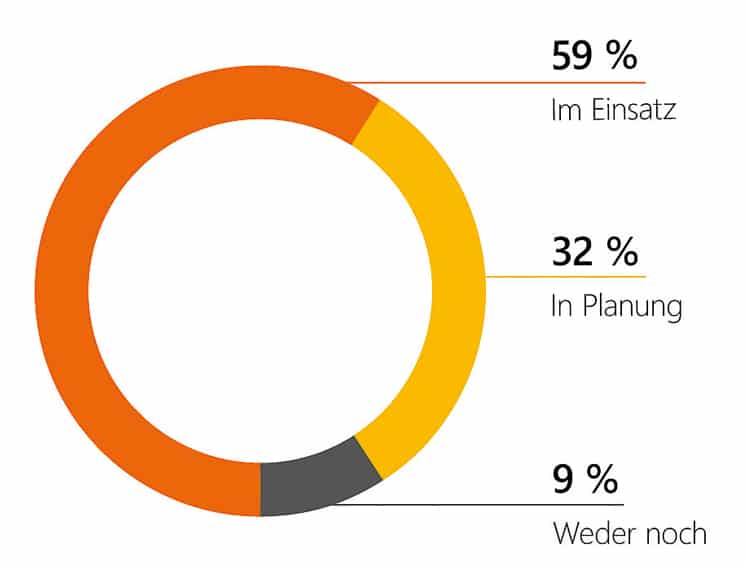
Offer of a digital customer or service portal for B2B customers. n=259, Source: ECC Cologne and B4B Solutions.
AI-supported service portal
A service portal can thus become the central control point of an omnichannel strategy and include AI-supported services, for example for spare parts procurement, predictive machine maintenance or evaluations of machine data. Key trends include self-service services and digital twins in machine and plant engineering. Digital twins have become an enormous competitive advantage.
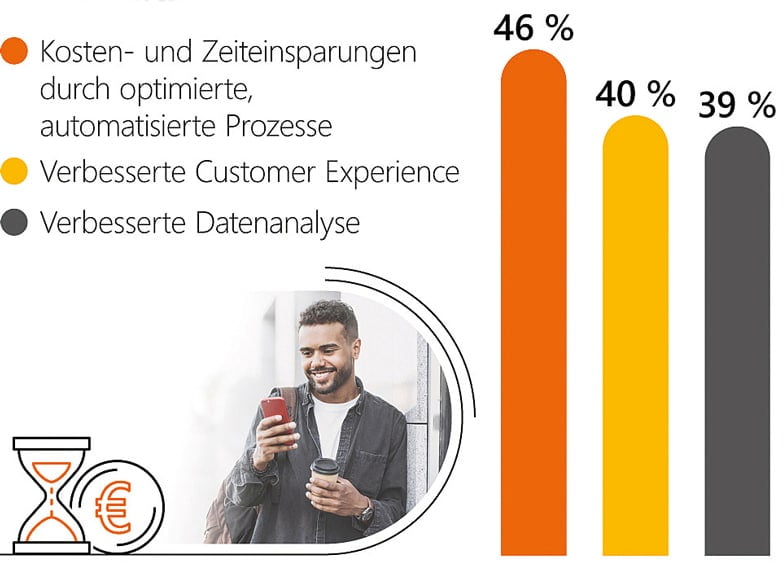
46 percent see time and cost savings as the main benefit. Top 3 added values of introducing a customer portal for companies. n=235 Customer portal in use or planned, multiple answers possible, Source: ECC Cologne and B4B Solutions.
All for One conducted a study on this in the fall and winter of 2021 together with ECC Cologne, a subsidiary of the Institute for Retail Research. The following aspects were of particular interest: How do companies classify customer and service portals in their business strategy? What are the current focal points and what technological and organizational trends are emerging? How do you safely move from the old world with e-mails, telephone and fax to the new world with 24/7 access to documents, chatbot-supported consultations and B2B commerce in the cloud? Why should IT and customer experts sit down with business leaders as they tackle the issue of a central customer and service portal?
It turned out that while three-quarters of companies see digital transformation at the top of their agenda. But 58 percent also said they were only at the very beginning, either in the early stages of implementation or still in the early planning stages. Selling products via digital channels is not yet digital transformation.
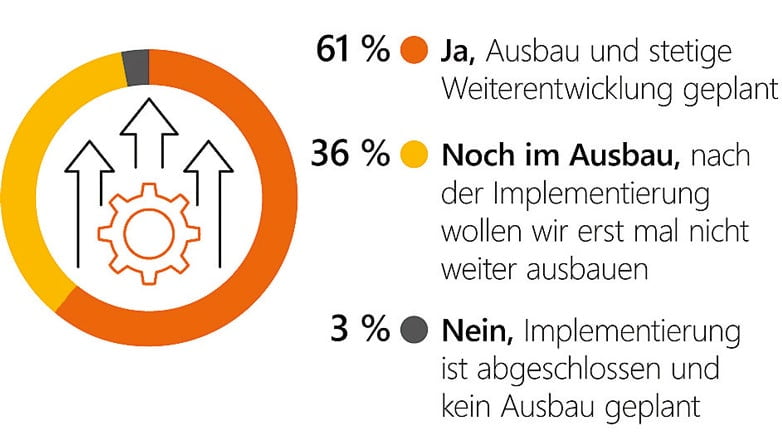
61 percent plan continuous further development and expansion of the customer portal. Future expansion planned. n=154 customers in use, source: ECC Köln and B4B Solutions.
Cost and time advantage
Nevertheless, 59 percent of the B2B manufacturers and retailers surveyed already offer their customers a service portal and see the main benefits in cost and time savings as well as customer experience and data analyses. Two-thirds of these 59 percent report annual sales of 25 million euros or more. This shows that a customer and service portal is by no means the domain of the big market players.
It is interesting to note that sustainability is also one of the top 6 advantages. This relates primarily to customer and partner relationships. These must be strengthened, extended beyond pure product sales, and a seamless customer journey with a first-class, sophisticated customer experience must be offered.
The study also shows that a digital customer and service portal requires a longer planning phase and a company-wide commitment, including and especially from the management level. However, an initial go-live can actually take place after just three quarters of a year. After that, a portal is expanded and further developed step by step.
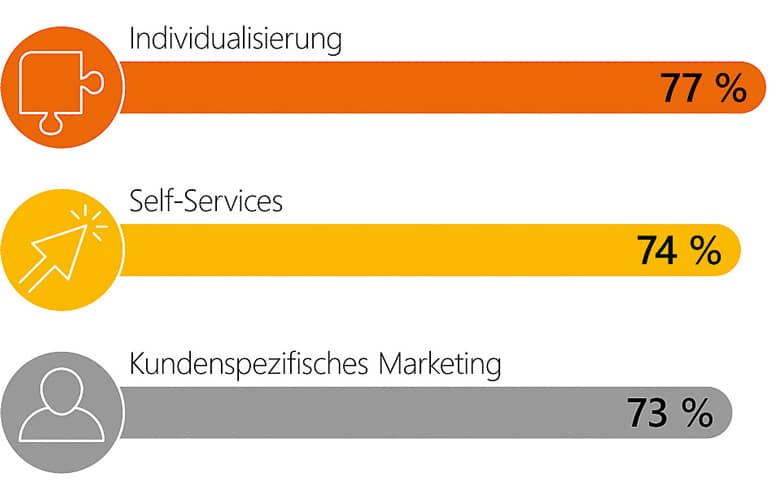
Individualization and self-service as top functions for providers. Top 3 functions of customer portals according to necessity for providers. n=236 Customer portal in use or planned, Source: ECC Cologne and B4B Solutions.
The decisive factor is always to meet the customer's wishes and needs as well as possible. Individualization, self-services, roles and rights management are all part of this.
The survey showed that classic sales channels are still the most frequently used. These include in-house sales, field sales and stationary specialist retailers. Only then are they followed by their own online stores, e-procurement or B2B marketplaces. Three quarters of the companies say that they consider digital transformation to be very important or important for achieving their business goals in 2022.
One finding from the study is that the four most important short-term investment areas for companies can be precisely covered by a digital customer and service portal. These are digitization of sales processes, automation of internal processes, marketing automation and digital direct sales. 78 percent of the companies surveyed see a customer portal as very or extremely important for an excellent customer experience; even
91 percent of companies in the machinery and equipment sector.
Expectation
But not all CX is the same. Customer experience is fundamentally highly dependent on different customer expectations, so it can vary greatly. This can mean product information as well as personalized marketing approaches.
Cost and time savings usually result from processes that are thought through from end to end. A service technician is supported by automatic fault detection and spare part identification; his skills matrix is stored in the system so that the right people are sent to fix the fault. Invoicing is automated; invoices can be viewed and retrieved by the customer in self-service at any time.
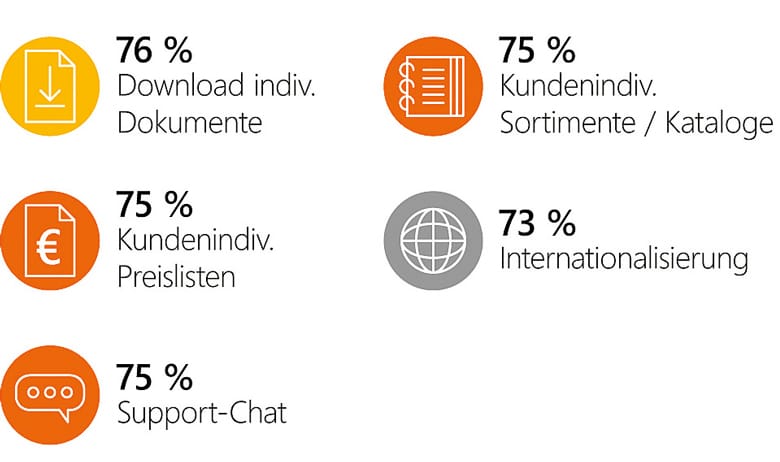
Also top priority for users: individualization of customer portals. Top 5 functionalities of the customer portal according to use in the company. n=154 Customer portal in use - Proportion: yes, Source: ECC Cologne and B4B Solutions.
The companies that want to set up a portal are aiming for a time horizon of less than twelve months until go-live. In addition to this speed of implementation, it is also interesting that more than half of the companies choose a best-of-suite approach, i.e., the integration of an overall solution from a single provider. Only around a quarter of the companies surveyed prefer to combine various individual solutions from several providers.
Continuity and planning
Three quarters of the companies that use a customer and service portal state that the introduction was planned for the long term and at management level. The further development of a portal is also geared toward longer horizons. Only three percent of the companies say that the implementation has been completed for the time being and will not be expanded further. Almost two-thirds of the companies, however, say they are planning continuous expansion and are constantly developing the customer and service portal.
An AI-supported chatbot, on the other hand, is (still) relatively rarely used, and its relevance is not (yet) consistently rated highly. This means that companies currently have the opportunity to offer added value in various categories and to stand out from the competition.
A positive customer experience also includes a product configurator. Ideally, it, too, can be a component within a process chain that can range from automated, individual price calculation to access to product configurations by sales representatives at the customer's premises.





